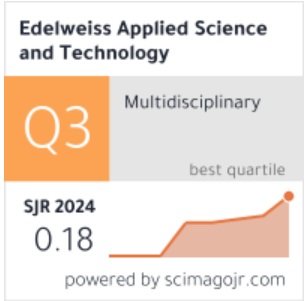All research articles submitted and accepted in 2025 will be eligible for a 100% waiver of APC if either the corresponding author or a co-author is recognized among the top 2% of most-cited scientists worldwide, according to the most recent Stanford/Elsevier citation database or a similarly recognized index.
Editor Guidelines
Roles and Responsibilities of Editors and Editorial Board Members
Editors and editorial board members hold a crucial responsibility in upholding the reputation and academic integrity of the journal. Their duties involve overseeing the entire editorial process to ensure the publication of accurate, high-quality scholarly content.
Editorial Oversight
Editors are responsible for maintaining the overall academic standard of the journal. They must consistently review submitted manuscripts to avoid the inclusion of erroneous information. If any inaccuracies are identified, the editor must take immediate steps to correct them, including issuing an addendum or erratum as appropriate.
Editors must strictly adhere to the publisher’s policies related to peer review and editorial procedures. They are expected to oversee all journal operations with a commitment to fairness, timeliness, thoroughness, and professional conduct.
As the primary stewards of the journal’s development, editors are also responsible for the timely release of each issue. Furthermore, they must take initiatives to incorporate the latest and most relevant scientific advancements that contribute to the growth of the journal.
When necessary, editors may facilitate scholarly discourse on controversial topics to clarify ongoing scientific debates. Such discussions might include areas such as surrogacy, clinical trials, gene editing, and other evolving fields.
The Editor’s Role in Serving the Scientific Community
Ensuring Clarity and Relevance
Editors must ensure that the content of submitted manuscripts, including author information, is presented in a clear and legible format. Each manuscript should be reviewed to determine whether it falls within the scope and objectives of the journal.
Editors are expected to maintain the journal's integrity by recommending necessary corrections, managing retractions, and reviewing any supplemental data submitted alongside manuscripts.
They should also actively work to attract relevant and current research that aligns with the interests of the journal’s readership.
Promoting Ethical Practices
Editors must take deliberate steps to prevent unethical practices such as plagiarism, data falsification, and copyright infringement. They are also responsible for promoting informed discussion and critical analysis of important scientific developments, particularly those with significant societal implications.
Editorial Responsibilities Toward the Journal
Editors have the final authority to accept or reject manuscripts based on reviewer feedback and their own editorial assessment.
They must evaluate all submissions based solely on their intellectual content. No editorial decision should be influenced by the race, gender, sexual orientation, religious beliefs, ethnic background, citizenship, or political views of the authors.
Editors and all members of the editorial team must treat all manuscript-related information with strict confidentiality. This includes details about the manuscript itself, author identities, reviewer names, potential reviewers, and other editorial contributors, as appropriate to the stage of processing.
Standard Workflow for Manuscript Processing
The following is the standard editorial process followed for all manuscript submissions:
- Submission and Acknowledgment
The manuscript is submitted by the corresponding author. Upon submission, the manuscript is registered, and a unique manuscript number is generated. An acknowledgment of receipt is sent to the author within 72 hours. - Scope Verification
The editor verifies whether the manuscript aligns with the journal’s scope and subject areas. - Editorial Assignment
The Editor-in-Chief forwards the manuscript to the Editorial Manager or Editorial Assistant for further processing. - Manuscript Categorization
The manuscript is classified by type—such as a research article, review article, case report, short communication, expert opinion, survey study, or letter to the editor. - Preliminary Quality Check
The manuscript undergoes a preliminary evaluation for quality, including a check for duplication and an assessment of originality using plagiarism detection tools. - Reviewer Selection and Assignment
The Managing Editor selects and assigns at least three independent reviewers who are qualified to evaluate the manuscript. - Peer Review Process
Reviewers are expected to submit their comments and evaluations within 21 days. Once all reviews are received, the Managing Editor may either make a recommendation to the Editor-in-Chief or initiate a discussion among reviewers in case of conflicting feedback. - Editorial Decision
Based on reviewer comments and internal evaluations, the editorial team will make one of the following decisions: - Accepted: The manuscript is accepted as is, with only minor corrections needed.
- Accepted with Minor Revisions: Authors are requested to make minor changes without requiring a second review round. The Editor or Editor-in-Chief will verify these revisions.
- Revise and Resubmit: Substantial revisions are required. If the revised manuscript is resubmitted within six months, it will be handled by the same editorial team.
- Rejected: The manuscript is either out of scope, lacks sufficient contribution, or is too unclear to be published. Authors should not resubmit without significant improvements.
- Author Notification and Revisions
After a decision has been made, the Editor-in-Chief or Managing Editor informs the authors. Accepted manuscripts are then revised for style compliance, and a DOI is assigned within seven days. - Copy Editing and Proofing
The manuscript undergoes copyediting, and an author-proof version is generated. After author approval, the final galley proof is prepared. - Publication and Archiving
The final version is published online with the assigned volume, issue number, and year. The article is also archived in the journal’s database for long-term access.






